CRUX Electric Skillet 14620 In-depth Review

Overall Verdict
The 12-inch Crux Non-Stick Electric Skillet 14620 impressed with its gray exterior accentuated by polished copper linings. However, we were more interested in how it actually cooked.
The heat distribution was better than other medium-sized skillets, such as the GreenLife and Bella, and it heated equally fast. Unfortunately, we found that the skillet’s temperature stabilization point was a bit too low to cook food the way we wanted.
Pancakes turned out average at the very best, while the heating cycle just wasn’t suited to cooking up a perfectly medium-rare steak.
In addition, the coating on the pan rim had some chipping and the base had grainy specs protruding. We felt with a price tag of $46.80 (at the time of writing), the GreenLife is by far a better choice.
Things We Like
- Fast heating
- Even heat distribution
- Ceramic non-stick coating
Things We Don’t Like
- Chipped coating
- Stubborn burn-ons may require some effort
Crux is a Made by Gather kitchenware brand founded in NYC in 2016. They try to bring a personal touch to their designs. Other products include air-fryer toaster ovens, waffle makers, sous vide cookers, and stand mixers.
Out the box, the Crux Non-Stick Electric Skillet 14620 certainly impressed with its good looks. The test-run of frying eggs and boiling water was a hit, but how did it do with delicate pancakes and a perfectly seared medium-rare steak? See our reveal together with data scores and original pics.
7.4 Performance
The Crux Non-Stick Electric Skillet 14620 had the best heat distribution among the medium-sized skillets we tested. This strength, unfortunately, only carried over to an average pancake and a subpar steak.
9.0 Analyzing Heat Distribution

The Crux demonstrated highly even heat distribution which is a rarity in medium-sized skillets. Normally, temperatures at the edges are lower due to the pan being square but the heating element circular.
To evaluate temperature consistency across the skillet's surface, we placed an oil absorbent sheet saturated with sugar water inside. Then, we heated the pan to 400°F and deployed an infrared thermometer.
Our assessment, measuring five distinct points spanning from the center to the corners of the pan, revealed a 5.2% average temperature variance. This scored an excellent 9/10 in our dataset, even slightly better than all larger skillets such as the top-performing Hamilton Beach 38529K.
7.3 Making Pancakes
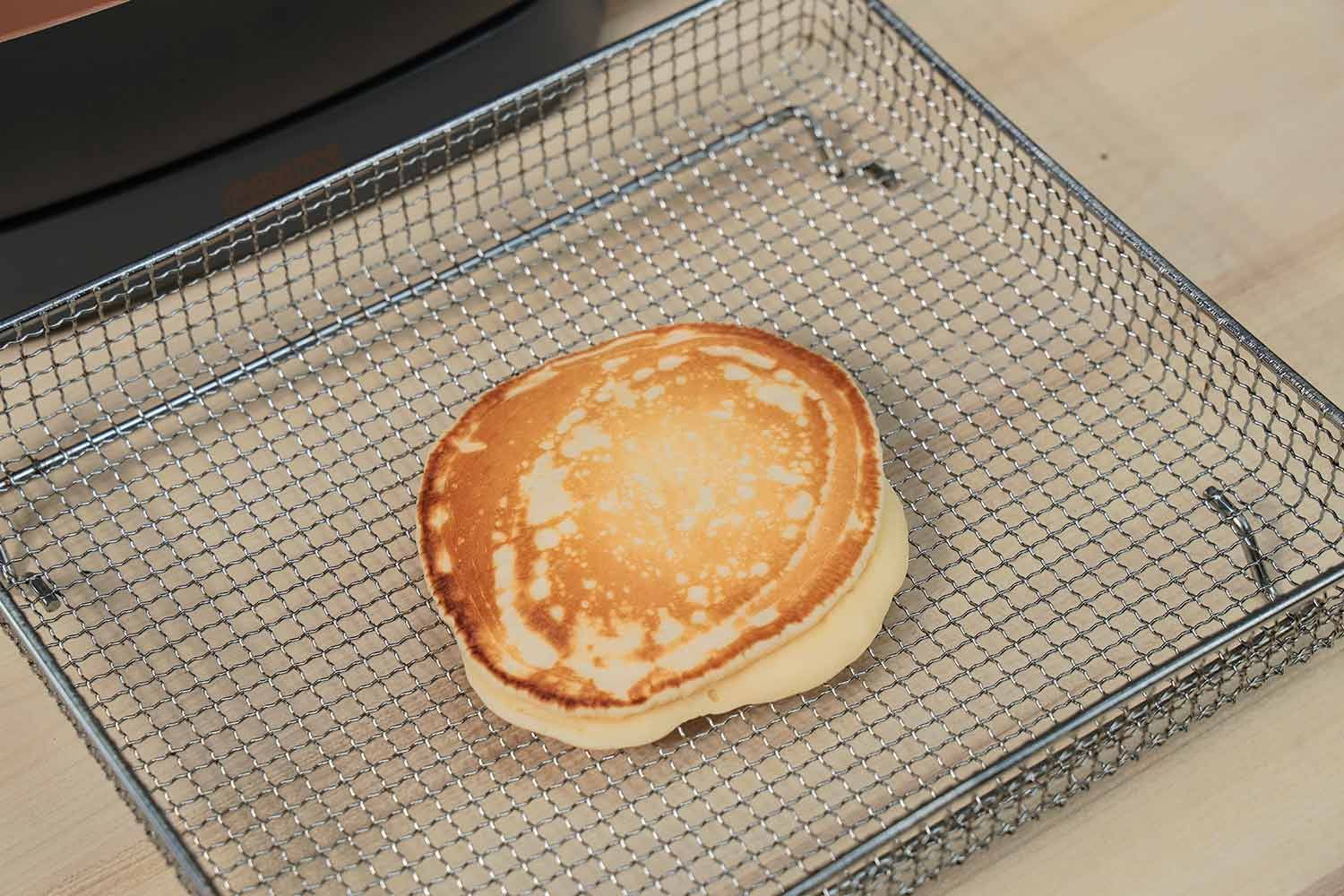

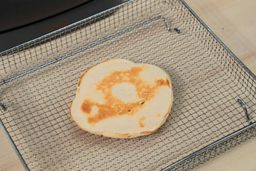
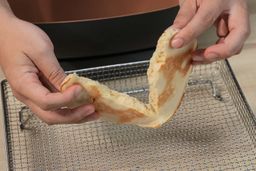
The Crux preheated to 350°F in exactly 2 min, scoring a perfect 10/10. Despite its slightly lower power draw, the smaller surface area of the skillet facilitated faster heating, which understandably outperformed the larger skillets.
With our homemade pancake batter, we gave 1 min 10 sec to the top and 3 min to the flipside of a 3.17 oz pancake. Unfortunately, the even heat distribution didn’t translate to an even color on the pancake.
While most of the pancake was a golden brown color, it also had a lot of mottled white spots. The same batch of batter was used in other skillets before and afterward so this wasn’t the problem.
Also, since the pan is relatively thin, the edges of the pancake got a bit dark right where the heating element is. The silver lining was a steamy inside, enough for a 7/10— a common enough score among medium-sized skillets.
Although this 12-inch pan can cook 2 or even 3 pancakes together, we only did one at a time for testing. Depending on your pancake mix, you may need to adjust the cooking time accordingly.
While the non-stick coating didn’t need any greasing, a light brushing of oil helps prolong the pan’s lifespan.
6.8 Cooking Steaks
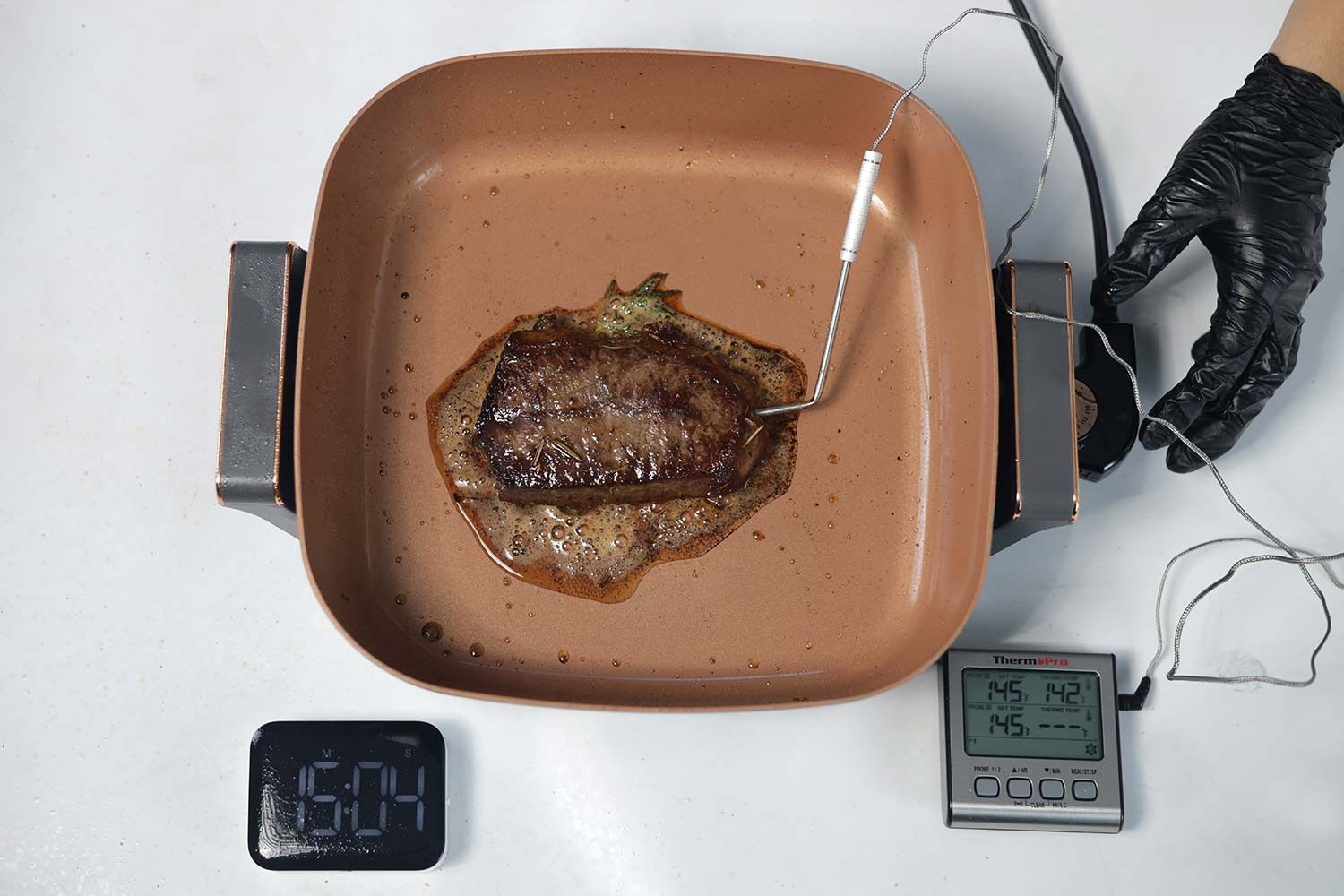

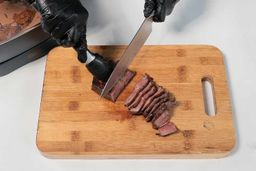
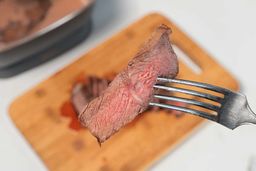
We first preheated the Crux to 400°F to make sure our 8 oz, 1.38-inch top blade steak got the best crusting possible. Similar to other medium-sized electric skillets in our data set, this took only 3 min scoring a commendable 9/10.
After seasoning the steak and inserting a meat thermometer, we seared each side for 4 min and 30 sec. Then, we seared the edge with the fat cap for 1 min and 30 sec, while the remaining edges were seared for 1 min each.
Afterward, we added fresh rosemary and butter, allowing each side to cook for an additional 1 min. The steak's internal temperature reached 142°F initially, which then increased to 145°F after resting for 3 minutes.
Since the heat didn’t stay high for long enough, the searing of both sides took a whole minute longer than similarly-sized skillets. And despite this, the crust was still very thin.
We later discovered the issue lay with temperature oscillations as detailed in our Ease of Use section further down.
The entire cooking process took 18 min 30 sec and the steak was slightly overdone for a medium-rare. The steak lost a significant amount of juice and became slightly tough, so our chef had no choice but to rate it a 6.5/10.
If we shortened the searing time for a more ideal doneness, we would compromise the already lackluster crust. So, we thought this was as good as it gets.
7.0 Design
The Crux Non-Stick Electric Skillet 14620 looks good on the outside and has all the basic design features. The overall build quality is good, but the all-important ceramic non-stick coating unfortunately had some chipping on the rim.
In the Box
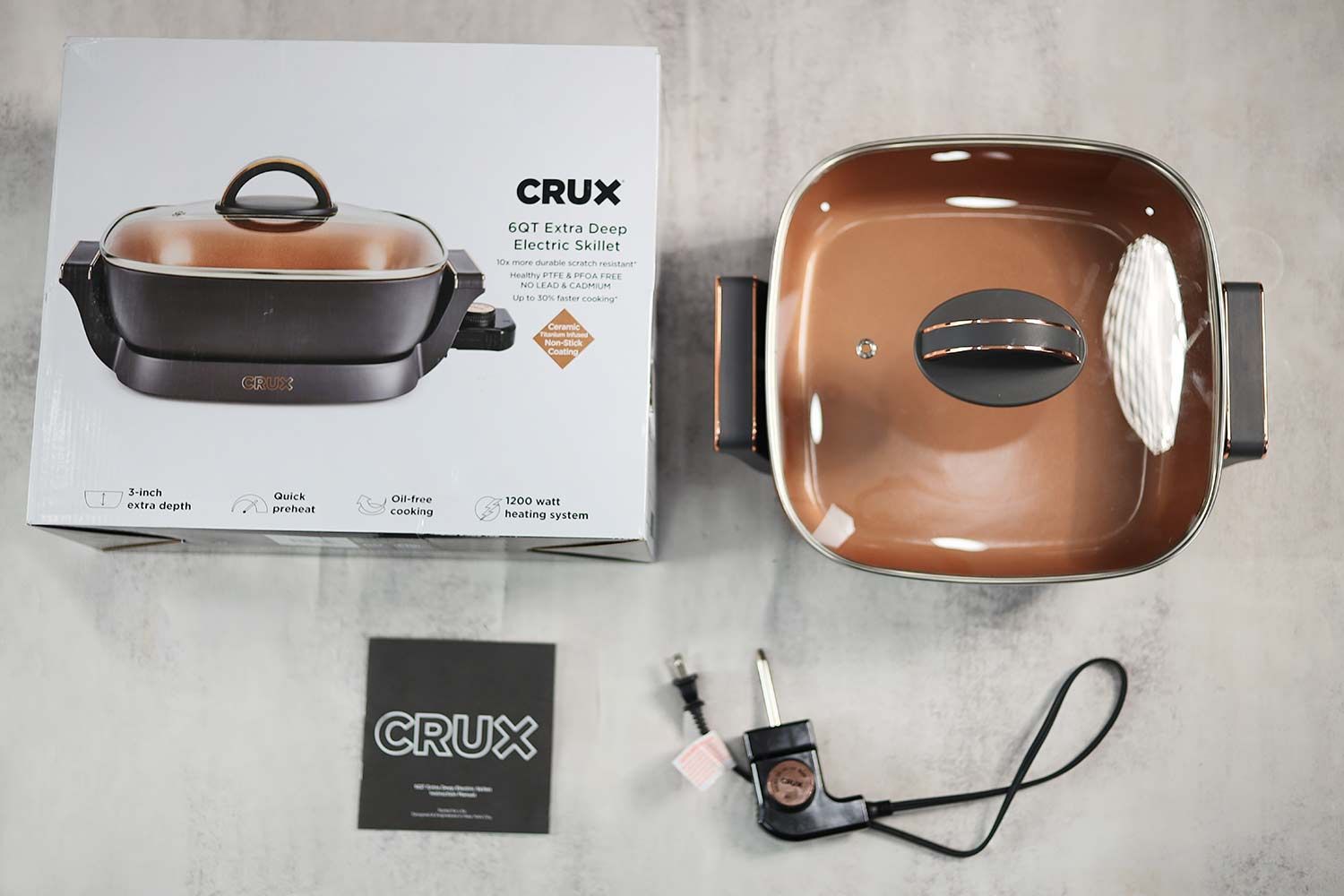
- One electric skillet
- One pan lid
- One thermostat
- One instruction manual
- Warranty: 2-year limited
Inside the Crux box is one electric skillet, one pan lid, one thermostat, all secured within a large styrofoam pad. The instruction manual includes cooking methods, USDA guidelines, and some recipes to go along with the skillet. It also details safeguards, parts and features, before first use, instructions on operating, care and cleaning, maintenance, and storing.
Dimensions
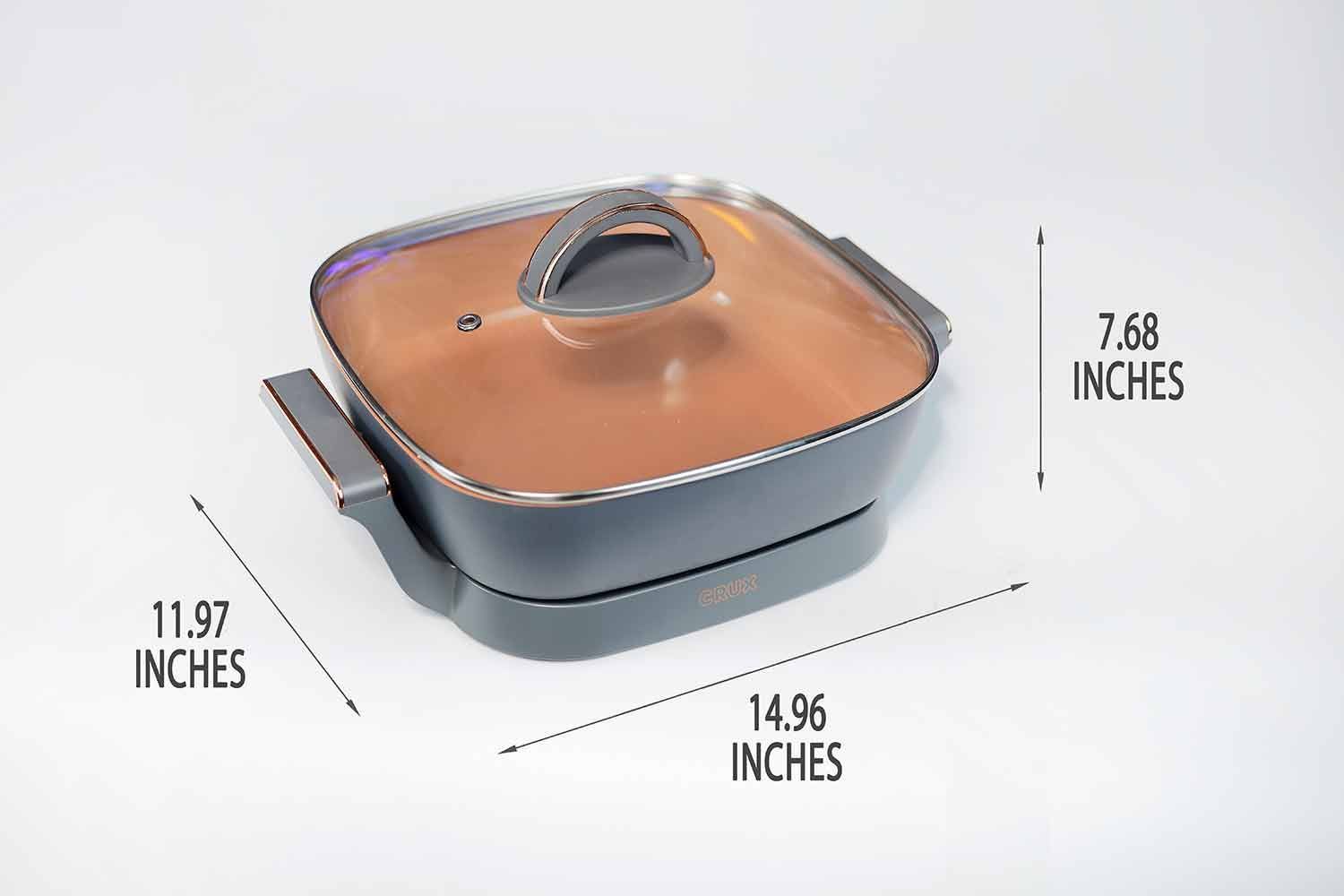
Our hand measurements matched well with the manufacturer’s 14.76" x 12" x 8. 07". We only weighed the skillet with the lid on, but the entire package should be around 8.55 pounds as they stated.
7.0 Pan

The Crux skillet has a cast aluminum pan which is more durable than a non-cast one (+3). The pan is only 2 mm (0.8 in) thick, but it didn’t deform under high heat and it heated up very evenly (+1). We calculated the total capacity to be around 6.8 quarts with a usable volume of 6 quarts as the label states.
The skillet has a ceramic non-stick coating which is free of PTFE and PFOA (+2). We noticed some grainy specs on the coating’s surface but this could be normal since they didn’t form any chipping or crack after cooking. We did, however, find some chipping on the rim which could indicate manufacturing and assembly issues (-0.5).
The pan along with the attached base are dishwasher-safe (+2). Unlike some other pans we tested, this one does not have a pouring spout.
9.0 Lid
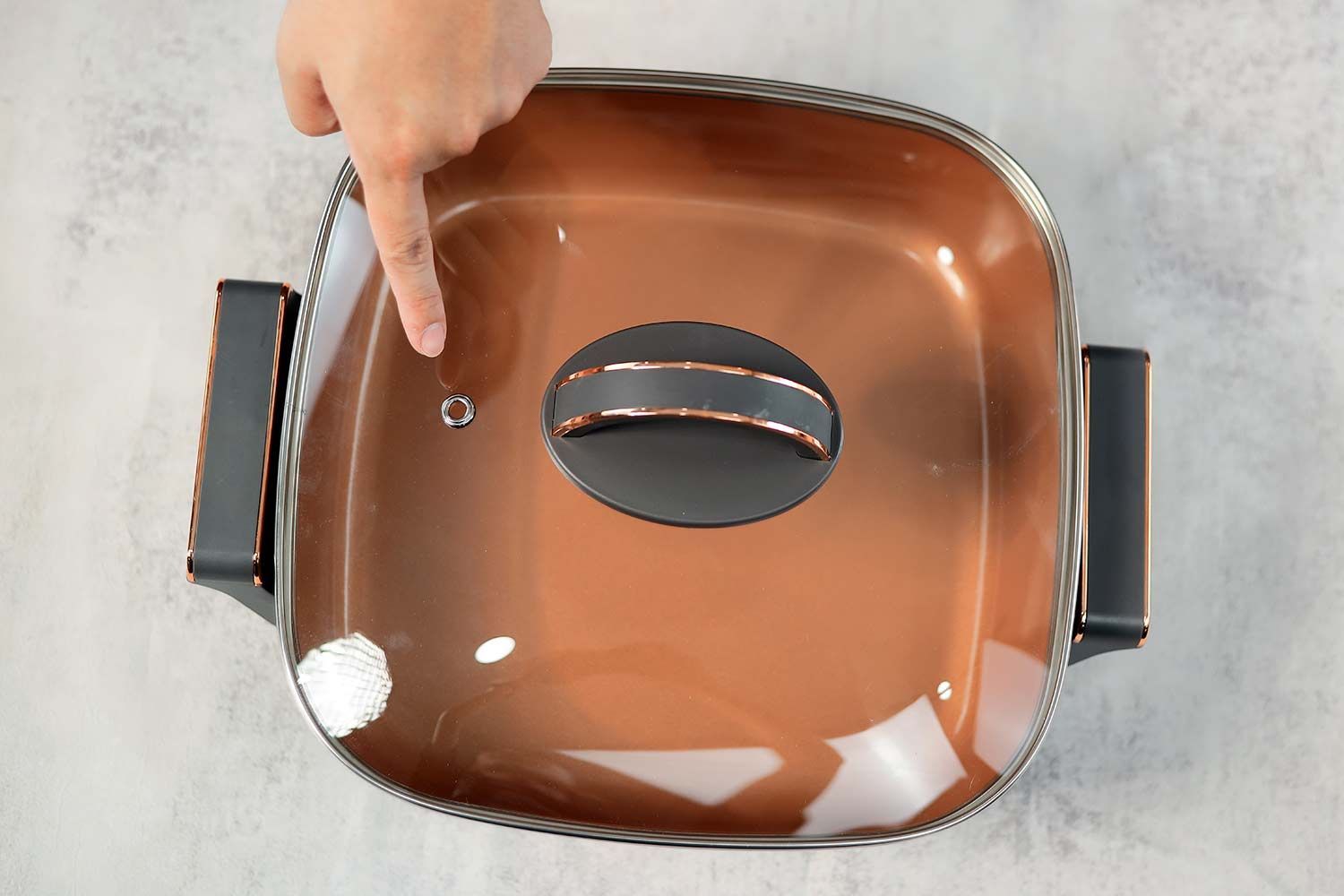
The tempered glass lid is dishwasher-safe (+4). It features a thermosetting plastic handle and a steam vent to release pressure (+2). Moreover, the metal edging is precisely sized to fit the pan (+3).
6.0 Base
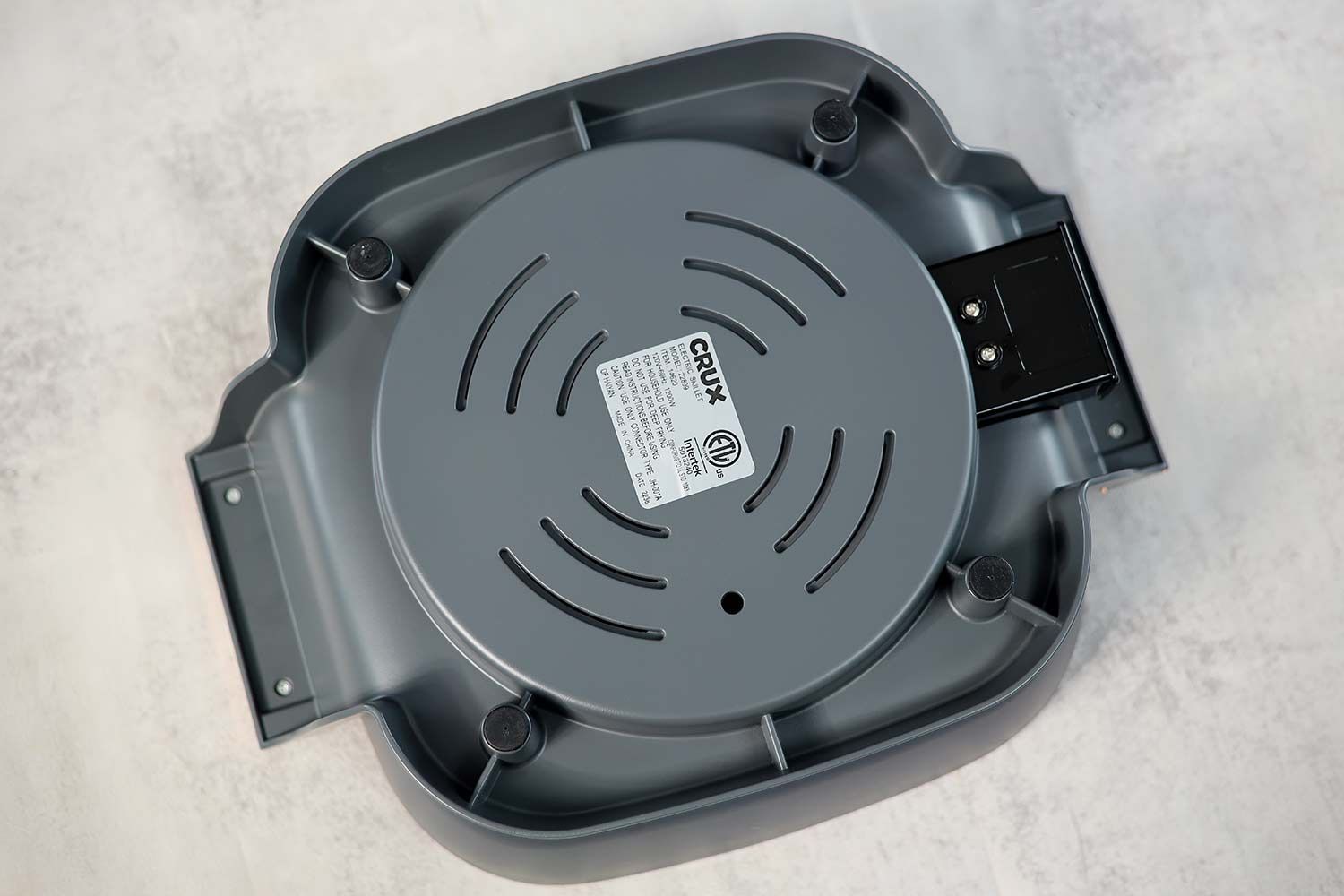
You will notice that the flat base has four stands with anti-slip pads at the bottom (+2). We found the pan to be very sturdy even though the thermosetting plastic material is much lighter than metal (+2). The pan is not detachable so make sure your dishwasher is big enough to fit the entire skillet (+2).
7.0 Thermostat
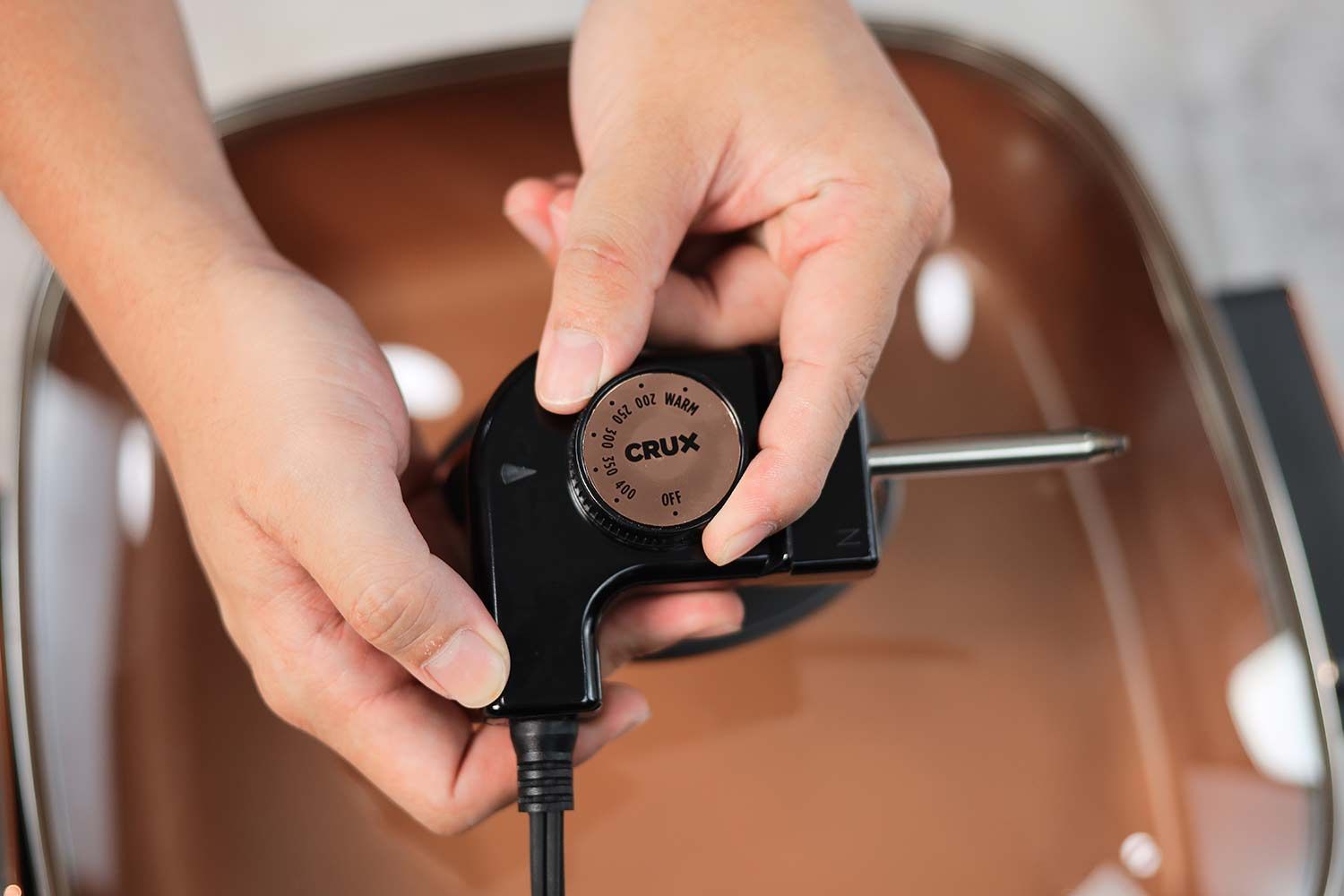
The detachable thermostat has a conventional design with a standard temperature range from 200 to 400°F, along with a keep warm setting of around 150°F (+3). It is well-designed with a seamless fit and a working indicator light (+4). However, like most other thermostats, it is not dishwasher-safe.
Power Cord
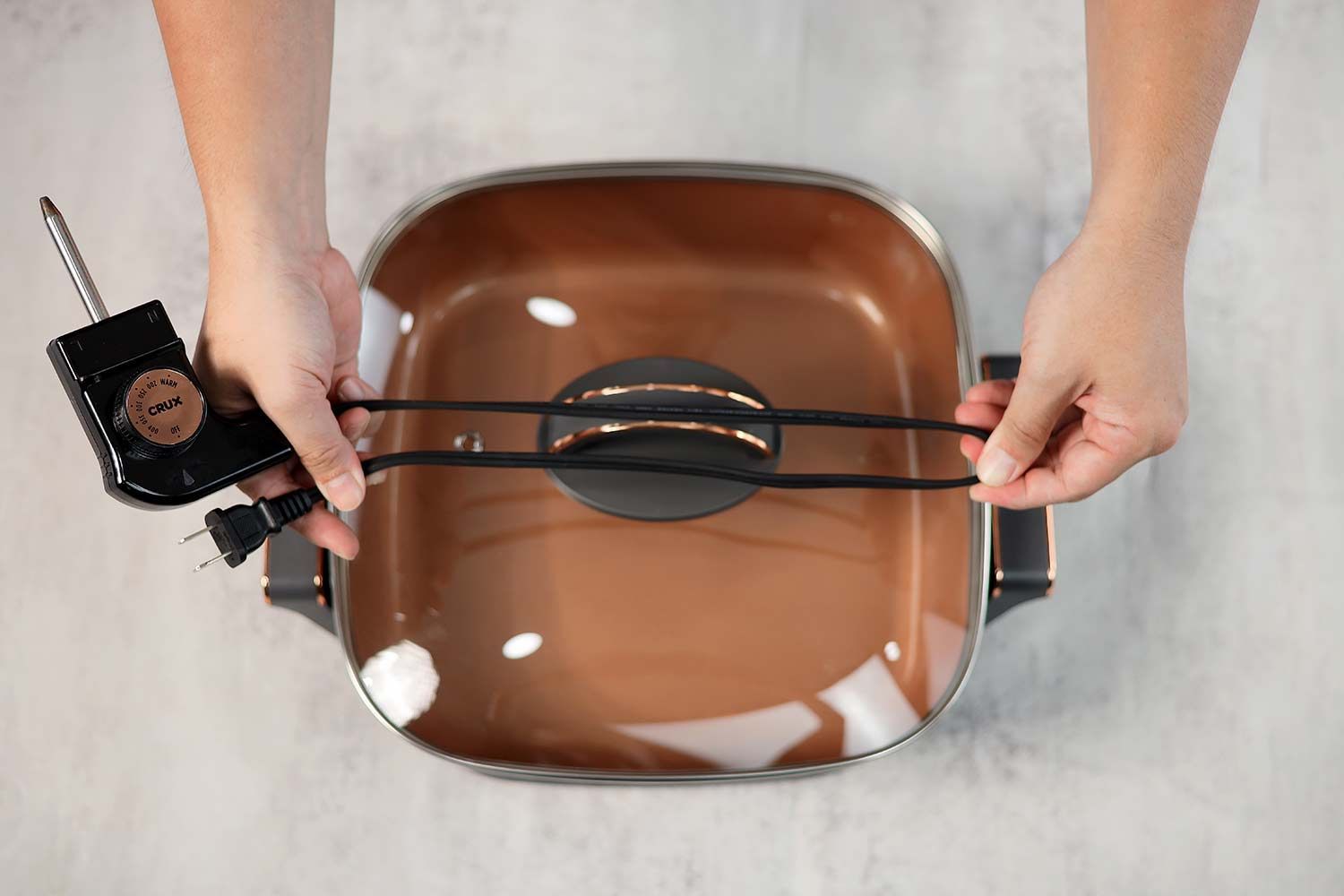
The power cord is a flat design and measures 26.57 inches in length. This may be slightly short for some users but it’s generally adequate for placing on a kitchen counter. It has a two-prong plug, which is typically perceived as less safe than a grounded three-prong plug.
8.8 Usability
The Crux Non-Stick Electric Skillet 14620 is user-friendly, its medium size fits well in most dishwashers, and it’s easy to store away. Although cleaning was simple for the most part, we encountered challenges with persistent burnt residues such as caramel stains.
9.0 Ease of Use
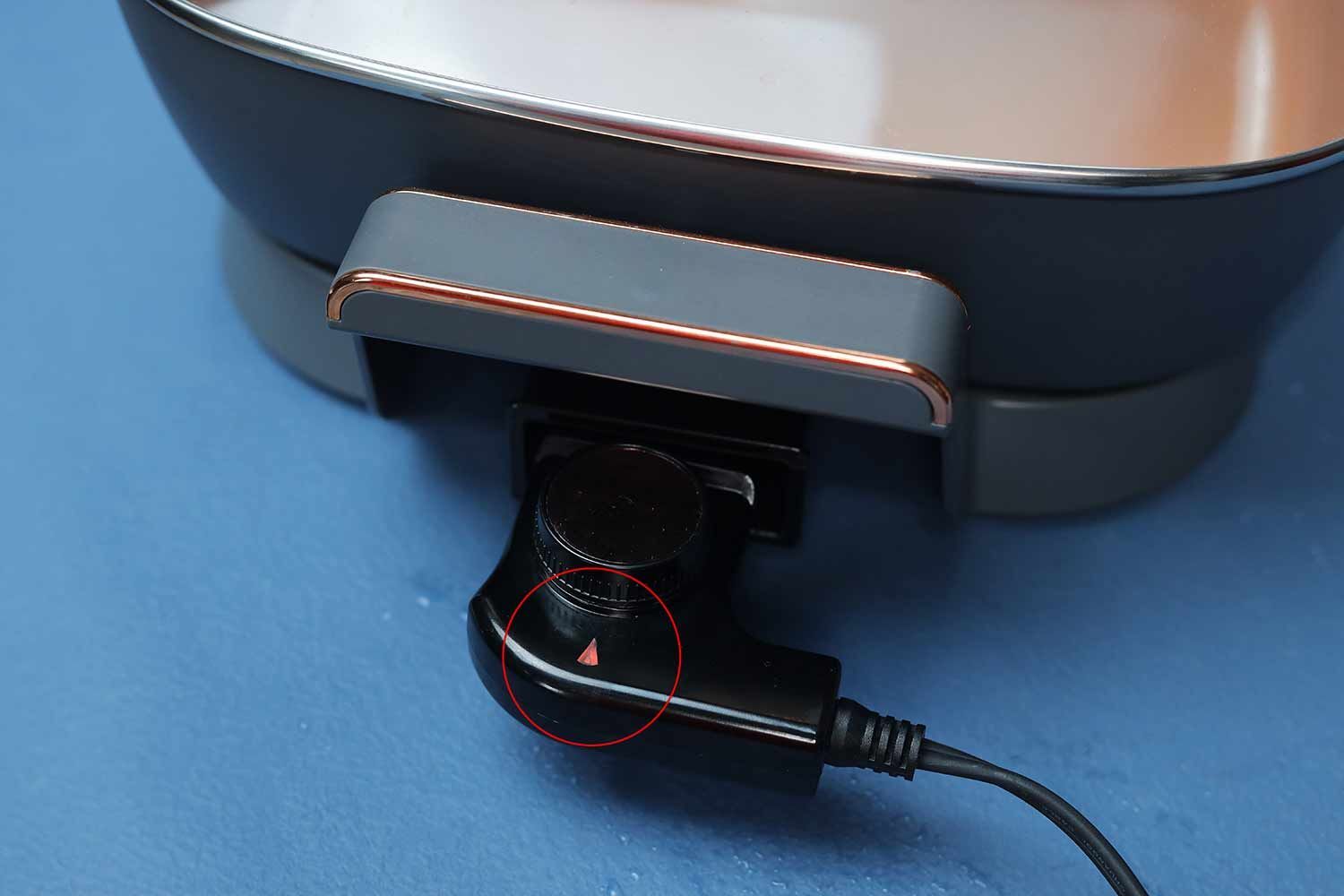
We encountered no issues with the fit of the electric thermostat, and the indicator light was easily visible (+3).
The temperature settings were not exactly imprecise, but we found the skillet cycled off and then back on around the exact input temperature. Most other skillets exceed the input temperature by around 50°F before dropping again below it.
As a result, temperatures stabilized slightly below the desired intensity and negatively affected cooking outcomes in our tests (-1).
Like other skillets, the exterior maintained a safe temperature with no risk of burning, but it’s still safer to grip the pan by the handles only (+3). Furthermore, the anti-slip pads did their job well even when we vigorously rocked the pan (+3).
8.5 Cleaning and Storing

The ceramic non-stick coating of the Crux effectively releases food (+2). During our heat distribution test however, we found that it required multiple washes with warm water and dishwashing liquid to entirely remove the burnt caramel stains (-0.5).
On a positive note, regular clean-ups were effortless (+2). Additionally, all parts of the skillet, except for the thermostat, can conveniently go into the dishwasher (+2).
The skillet is really attractive so it looks good out on the counter, or you can put it back in the box for safe keeping (+3).